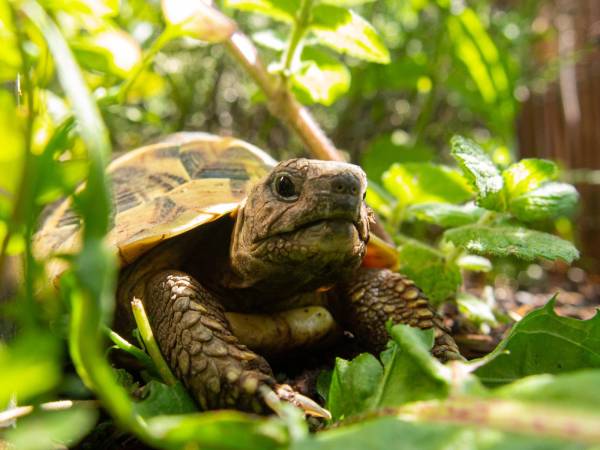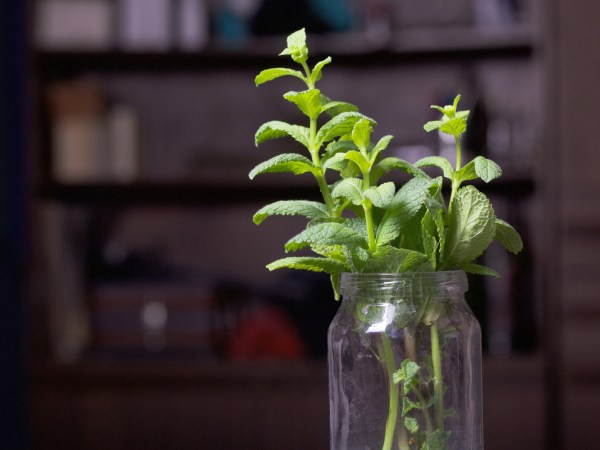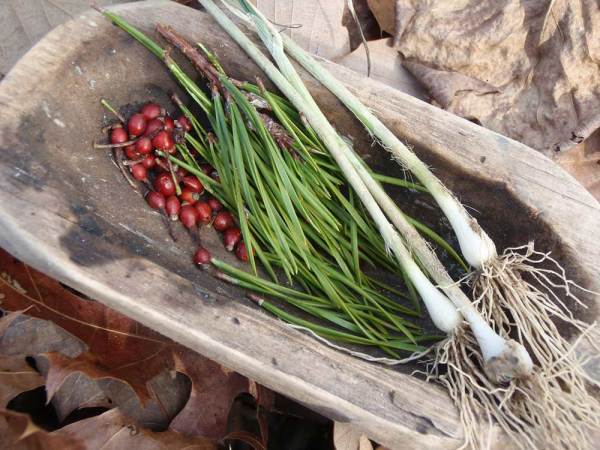

The grass lawn is as much a part of the lore of the American suburban dream as white picket fences and apple pies. But that page may be turning—some Americans are reconsidering why they continue to put money and time into this less-than-eco-friendly part of the home.
“I think there’s definitely a trend towards more sustainable and more environmentally conscious yard solutions,” says Bythe Yost, a landscape architect and chief executive of Tilly, an online landscape design company. “But that certainly isn’t everybody, and I think the more education you can do the better, because there’s definitely room for good balance—not just having a monoculture of one grass mowed to a specific height.”
Figure out why you want to replace your lawn
Don’t start ripping out your lawn and ordering whatever looks good in the Home Depot catalog before you pinpoint your landscaping goals. Perhaps you want to help fight the climate crisis, cultivate native plants, minimize stormwater flooding your yard, or grow edible plants for home cooking. You might even have several reasons that complement one another: maybe it’s equally appealing to have both less grass to maintain and a more natural environment to live in.
Determining your motivation will enable you to do specific research and hire the right local landscaper for the job, if you’d rather have someone else handle all the details for you. Costs will vary dramatically depending on the size of the project, the types of plantings and ground coverings you choose, and whether you hire landscaping or horticulture help.
Start by writing down what you want and sketching roughly where you would like those elements to go in the yard. Then you can start narrowing down what might incur too much time, money, or upkeep for your lifestyle.
Decide how much space you need for your activities
Another important aspect of identifying why you want to reimagine your lawn is determining what you want to use the land for. When you decide to tear up your grass, you’re naturally taking away space that might be otherwise used for sports, parties, or other home projects. Keep in mind any alternatives for those activities, or how you can make a more eco-friendly yard work with your lifestyle.
If you or anyone in your home plays sports, think about how much space you actually need to practice and whether there are suitable courts or fields nearby to use. And unless you’re throwing truly massive parties, you might not actually use most of the lawn space you have. Understanding what you truly need for your routines, hobbies, and social activities will allow you to happily coexist with a less-grassy lawn.
[Related: 5 yard games for some real summer fun]
Thinking about your outdoor needs will also help you determine what kind of ground coverings might work for you. Plain old dirt or moss might be better for a project space, while gravel could work in an outdoor dining area where grass would likely be worn down by foot traffic
Still, you might consider keeping a small patch of grass for specific uses, like children’s play or backyard exercise.
Choose what you want to plant
Be sure to research which plants actually have the best chance of survival in your climate. The US Department of Agriculture classifies plants by their hardiness, or ability to grow in certain climates, a scale that can help guide you toward plants that won’t die when winter arrives. Other databases, like the Native Plant Finder (helmed by a University of Delaware wildlife ecology and entomology professor), exist to help determine the best plants for your specific zip code.
But Kelly Norris, a gardening book author and former director of horticulture and education at the Greater Des Moines Botanical Garden, suggests seeking out groups in your neighborhood, town, or county. Native garden lovers are everywhere, so folks at a local horticultural organization, botanic garden, master gardener group, or community garden center can help you pick out the plants that will work for your goals.
Confirm you’re not breaking any rules
Once you know what you want, think about the community you’re in. If you live in a place with rules governing certain kinds of development or alterations, like a homeowner association, break out your highlighter and read over your contract or guidelines. Many homeowner associations, or HOAs, won’t be inclined to allow you to completely turn your front yard into an untamed meadow or a working farm plot, says Greg Kurzner, a licensed real estate broker in the Atlanta area and a former HOA president. But that doesn’t mean you won’t be able to find wiggle room within your contract to balance your desires and their interests.
For example, your guidelines may require some sort of landscaping by your front windows, door, or patio, but might not get into specifics. The rules also might not detail how wide that garden area needs to be—opening up the possibilities for expanding the square footage of your yard that isn’t purely grass. Your HOA might also not catalog the exact plants that you can have in your front or back yards. While you might have to stick with a certain aesthetic shared across the neighborhood, you might be able to choose local plants or mix in more-sustainable alternative ground coverings, like sedges or certain clovers.
“I would always say it’s better to ask for permission than forgiveness,” Kurzner says of dealing with HOAs. “It’s better to have a plan made as detailed as possible by a landscaper … with elevations and visuals.” He suggests taking that plan to your review committee for feedback and approval before sinking time and money into the project.
“You’ll be surprised, because a lot of times people will be initially negative about it, but then once it’s presented and it’s implemented correctly, people are really cool with it,” he added, noting that an attractive, unintrusive design could set a neighborhood trend with an approved precedent.
But even if you don’t live in an HOA community, considering your neighbors’ wants and needs ahead of time will help eliminate any arguments down the road about major changes.
Once you know what you want to do with the space, think about how much informal notice you want to give your direct neighbors. Are you just expanding your garden and planting local species? You probably don’t need to let them in on the plans ahead of time. Are you turning huge sections of your lawn into something more creative? Your local regulations probably won’t require you to give your neighbors any notice or show them sketches of your vision, but the courtesy could go a long way in keeping unproductive or dissuasive conversations to a minimum.
Understand the challenges to growing your own food
With supply chain issues abound the past few years, you’ve probably thought growing your own fruits and vegetables would be easier than repeat grocery store trips.
But if you’re truly interested in producing food where your grass grows, be realistic about what you plant. Brie Arthur, a gardening book author, suggests writing down what you eat in a week and selecting three edible plants based on that list.
“A lot of times, people’s vegetable gardens are not only visually impractical, but they grow things that they don’t eat on a regular basis,” she explains, noting that being smart will help minimize trips to the store and wasted money in the garden. “So then they don’t fully take advantage of the harvest.”
Arthur also suggests thinking about your usual seasonal routines. Are you likely to go away on a two-week vacation and not have anyone to tend to your tomatoes? That’s a recipe for a garden disaster. Consider how often you’ll want to actively tend to any edible plants, too. If you don’t think you’ll reasonably be heading out to the garden every other day throughout the growing season, pick crops that can succeed without much intervention.
[Related: 3 tricks to make your fresh herbs last year-round]
Another question to consider is how integrated you want any edible plants to be among your non-edible ones. Having both ornamental and edible plants mixed together may look nice but, depending on how wide the garden bed is, it may be difficult to harvest and maintain your crops without disturbing the ornamentals. Sticking the edible plants in their own section away from the house might make the food garden a destination within your property, but it also will make it harder to tend to it.
And if you live in an HOA community and want to grow produce in the front yard, you can find clever ways to incorporate low-profile edible food. Arthur suggests planting herbs that will smell nice, add flavor to meals and, importantly, won’t be as visually disruptive as container gardens or raised beds. Two non-herb options might be lettuces or potatoes, given their low-to-the-ground profiles.
Being clever with your plant selection and growing spots can help you get approval from your HOA board, as Arthur found after incorporating edible plants into her front yard.
“It was really funny when the rest of the HOA board came to see what I had done, because they couldn’t distinguish the vegetables from the ornamental plants since I wasn’t growing them … in straight lines in boxed beds segregated from everything else,” she explained. “And what they saw was this beautiful, colorful, textural combination.”
Think about what may come into your yard
Plenty of homeowners see the occasional flock of early morning visitors: foxes scurrying across lawns, songbirds sitting on fence posts, a couple of bunnies skipping around.
When you increase the biodiversity of your yard by eliminating or minimizing a large swath of a single type of grass, you’ll naturally see more of the creatures you’re used to—and some you might not be used to, like more deer munching on your lilies.
And if you plant anything widely consumed by living beings, or decide to incorporate water features, you might worry about an abundance of new pests, like bugs or vermin, occupying your new garden. If you know what to expect, you can plan potential defenses.
Even so, Norris thinks you shouldn’t worry about that, as nature will do its thing and take care of any large quantities of smaller pests.
“The great thing about planting in a diverse fashion is that it supports diverse creatures, which includes natural predators,” he said. “There’s something more organic and fluid about those relationships… you often see that with pest problems, as they start to really reach the point that you start to notice them, if you start looking you’ll probably see natural predators already [taking care of the situation].”














